Don't wanna be here? Send us removal request.
Text
Week 12: Crowd sourcing in times of crisis

Understanding Crowdsourcing in the Digital Age
Crowdsourcing is commonly defined as the practice of soliciting ideas, services, or content from a large group of people particularly from online communities, instead of relying on traditional sources (Howe 2006). Although often associated with innovation and commercial design, this approach has taken on new significance in crisis communication. Social media platforms now allow decentralized groups of people to contribute critical, real-time information during natural disasters and emergencies. This form of networked collaboration reflects Pierre Lévy’s (1997) concept of “collective intelligence,” where disparate knowledge is pooled for a shared goal. The 2010 Haiti earthquake, where tools like Ushahidi mapped crisis information via SMS and Twitter updates, highlights how digital networks enable rapid, crowdsourced responses to urgent humanitarian needs.
Social Media as a Crisis Communication Infrastructure

Platforms like Twitter, Facebook, and Instagram have evolved into vital infrastructures for emergency response, as they allow both horizontal (peer-to-peer) and vertical (citizen-to-authority) communication (Ford 2012). During the 2011 Queensland floods, for instance, the Queensland Police Service (@QPSMedia) effectively used Twitter for real-time updates, myth-busting, and public reassurance. Posetti and Lo (2010) observed that such "Twitterisation" of emergency services challenged the ABC’s traditional broadcast model by encouraging multidirectional communication. While this decentralisation enables faster information flow, it also presents challenges related to coordination, misinformation, and overload. It highlights a fundamental shift in crisis management from closed, centralised models to more open, participatory ecosystems.
Verification and the Ethics of Information Sharing
Despite its benefits, crowdsourcing in crisis contexts introduces serious ethical and logistical issues, especially regarding verification. As Ping Lo (2012) notes, verified information can be a matter of life or death. The speed at which content spreads on social networks often outpaces the ability of emergency services to verify its accuracy, leading to the risk of panic, confusion, or even harm. The challenges faced by platforms like Ushahidi designed to map real-time citizen reports, illustrate the tension between inclusivity and credibility. This raises critical questions for media scholars: How do we ensure the reliability of user-generated content without undermining the democratic, open nature of these platforms?
Witnessing and Participatory Journalism

Crowdsourcing is not just about data, it also facilitates affective and symbolic participation. Horbury and Hughes (2010) argue that social networking sites become spaces where people “construct knowledge, shape memories, apportion praise and blame, and perform identities” after trauma. This is evident in the way users share images, stories, and personal experiences in the wake of disasters. Amateur footage, once overlooked by traditional media, is now central to how we visualize crises. This participatory turn reflects a broader shift towards what Bruns (2008) calls “produsage”, users as both producers and consumers of content. However, such participation also invites questions about emotional labor, trauma voyeurism, and digital ethics.
Towards Integrated Crisis Platforms

Moving forward, scholars and practitioners alike stress the need for better integration between official emergency services and crowdsourced platforms. Anderson (2012) notes that traditional command-and-control models often clash with the speed and openness of social media. Instead of resisting these shifts, agencies must embrace hybrid models that combine institutional authority with grassroots engagement. Initiatives like Crisis Commons and Digital Humanitarianism show how volunteerism, technology, and real-time information sharing can be coordinated for greater impact. However, this requires not just better tech, but also robust policies around accountability, privacy, and inclusivity.
Conclusion
Crowdsourcing in times of crisis embodies both the promise and perils of digital media. It empowers communities to act, document, and inform but it also exposes gaps in verification, coordination, and digital ethics. To harness its full potential, we must balance openness with accuracy and human solidarity with strategic planning.
References
Anderson, M 2012, ‘Integrating social media into traditional emergency management command and control structures: the square peg into the round hole?’, Australian Journal of Emergency Management, vol. 27, no. 1, pp. 54–59.
Ford, H 2012, ‘Emergent public authority and disaster media: From Haiti to Fukushima’, Media, Culture & Society, vol. 34, no. 6, pp. 763–778.
Horbury, A & Hughes, A 2010, ‘Social media after Black Saturday: Making sense of disaster, dealing with trauma’, Media International Australia, vol. 137, no. 1, pp. 144–147.
Lévy, P 1997, Collective Intelligence: Mankind’s Emerging World in Cyberspace, Perseus Books, Cambridge.
Posetti, J & Lo, P 2010, ‘The Twitterisation of ABC Emergency and Disaster Communication’, Journalism Research and Investigation, vol. 22, no. 3, pp. 33–38.
Howe, J 2006, ‘The rise of crowdsourcing’, Wired, vol. 14, no. 6, pp. 1–4.
Bruns, A 2008, Blogs, Wikipedia, Second Life, and Beyond: From Production to Produsage, Peter Lang, New York.
0 notes
Text
Week 10: Gaming Communities, Social Gaming and Live Streaming: Twitch

Niche Hobby to Mass Media

Live game‑streaming has exploded since the late 2010s: Twitch alone reports that the average user now spends around 95 minutes per day on the platform, with viewership concentrated among 18‑ to 34‑year‑olds. This dramatic uptake turns play into performance, dissolving the old boundary between “player” and “spectator” and creating real‑time, chat‑driven micro‑communities that sit at the heart of contemporary digital culture. Such communities align with this unit’s focus on networked publics, they grow organically around shared interests, yet are structured by platform architectures that monetize attention.
Social Motivations & Knowledge Exchange
Empirical work by Hilvert‑Bruce et al. (2018) shows that viewer engagement on Twitch is driven less by game mastery than by social motivations such as a sense of belonging and the opportunity to interact with like‑minded others. The chat box, subscriber badges and emote economies foster what the authors call “participatory co‑presence,” echoing Jenkins’ notion of knowledge communities but placing it in a real‑time, monetized context. For students of digital communities this illustrates how platforms transform fandom into semi‑professional labour, rewarding both streamers and viewers for constant participation while harvesting data for advertisers.
Mental‑Health Conversations & Community Care

Live streams are not only about entertainment. Gandhi et al. (2021) found that mental‑health discussions are a routine, if still uneasy part of many gaming streams, facilitated by mass personal communication that feels both public and intimate. Complementing this, de Wit et al. (2020) report that viewers turn to Twitch to cope with difficult life events, shifting from “background watching” to more active engagement during stressful periods. These findings complicate pathologising narratives around screen time: the same platform that can encourage escapism also provides peer support and visibility for mental‑health discourse.
The Pathology Debate

Yet the convergence of gaming and viewing is not without risks. A 2022 Scientific Reports study of 970 Twitch users showed that a strong motivation for social belonging , while generally positive also predicted higher odds of pathological gaming, particularly when combined with professional aspirations in esports. This supports concerns raised in class about “prosumer pressure”: as leisure is folded into aspirational labour, the incentives to stay online intensify, potentially harming well‑being. It also underscores the need for platform governance that balances engagement metrics with user health tools such as time‑tracking reminders.
Gender Gaps and Toxicity in Esports Spaces

Inclusion remains a contentious frontier. Kordyaka et al.’s (2023) mixed‑methods study of League of Legends players confirms that women remain vastly under‑represented in competitive esports, not because of lower motivation but due to cultural and dispositional barriers, including hostile in‑game climates and stereotype threat. A recent population study of Norwegian youth echoes this disparity, finding that only 0.7 % of girls versus 8.8 % of boys engage actively in esports leagues. Addressing toxicity, implementing inclusive matchmaking, and amplifying female role models are therefore critical steps if gaming communities are to reflect the diversity of their player base.
Conclusion

Live‑streaming and gaming communities exemplify the tensions explored throughout this unit: they are simultaneously sites of connection, knowledge exchange and creativity, yet also arenas where commercial logics, mental‑health risks and gender exclusion play out. Understanding these dynamics through independent scholarship and critical media literacy equips us to imagine more equitable, sustainable digital futures.
References
Cabeza‑Ramírez, L J, Rey‑Carmona, F J, Cano‑Vicente, M C & Solano‑Sánchez, M Á 2022, ‘Analysis of the coexistence of gaming and viewing activities in Twitch users and their relationship with pathological gaming: A multilayer perceptron approach’, Scientific Reports, vol. 12, article 7904.
de Wit, J, van der Kraan, A & Theeuwes, J 2020, ‘Live streams on Twitch help viewers cope with difficult periods in life’, Frontiers in Psychology, vol. 11, article 586975.
Gandhi, R, Cook, C L, LaMastra, N, Uttarapong, J & Wohn, D Y 2021, ‘An exploration of mental health discussions in live streaming gaming communities’, Frontiers in Psychology, vol. 12, article 575653.
Hilvert‑Bruce, Z, Neill, J T, Sjöblom, M & Hamari, J 2018, ‘Social motivations of live‑streaming viewer engagement on Twitch’, Computers in Human Behavior, vol. 84, pp. 58–67.
Kordyaka, B, Pumplun, L, Brunnhofer, M, Kruse, B & Laato, S 2023, ‘Gender disparities in esports – An explanatory mixed‑methods approach’, Computers in Human Behavior, vol. 149, article 107956.
Østhus, T, Tefre, Ø, Torp, H & Torsheim, T 2024, ‘Prevalence and characteristics of female and male esports players among Norwegian youth: A general population study’, International Journal of Environmental Research and Public Health, vol. 21, no. 9, article 1136.
0 notes
Text
Week 9: Digital Citizenship and Software literacy: Instagram Filters

Introduction: Augmented Reality and the Filtered Self
Augmented reality (AR) filters have become an everyday feature of digital communication, particularly on platforms like Instagram and Snapchat. These filters, enabled by accessible smartphone technology, superimpose digital effects over real-world images, subtly altering faces to reflect idealised versions of beauty (Azuma 1997). However, behind this playful engagement lies a critical cultural shift. Filters are no longer just fun features,they are tools shaping self-perception, gender norms, and aesthetic expectations, often without users fully realising their influence. As platforms embed increasingly realistic filters using AI, the boundaries between authenticity and augmentation blur, especially for young women navigating digital identity.
Beauty Filters, Homogenisation and Objectification Theory

Beauty filters often enhance features such as smoother skin, larger eyes, smaller noses, and contoured jaws ideals rooted in Western beauty standards. According to objectification theory, such aesthetic interventions lead users, especially women to internalise an observer’s perspective of their own bodies, encouraging constant self-surveillance (Fredrickson & Roberts 1997). Coy-Dibley (2016) notes that this “digitised dysmorphia” can result in alienation from one’s unfiltered self. When users repeatedly see themselves through beautified filters, they may begin to dislike their natural appearance, which reinforces a cycle of editing and dissatisfaction. These filters promote a homogenised look, discouraging individuality and reinforcing gendered expectations around attractiveness.
Snapchat Dysmorphia

The term “Snapchat dysmorphia,” coined in media discourse, now has clinical recognition. Rajanala, Maymone and Vashi (2018) observed a growing number of patients seeking cosmetic surgery not to resemble celebrities, but to look like filtered versions of themselves. Burnell, Kurup and Underwood (2021) further argue that frequent Snapchat lens use correlates with increased body image concerns. While causation remains debated, the “mutually reinforcing relationship” between social media exposure and body dissatisfaction is well documented (Perloff 2014). What’s worrying is that users don’t always recognise the changes as filtered—especially with “ambient” filters that appear natural but subtly enhance facial features (Lavrence & Cambre 2020).
The Digital-Forensic Gaze and Authenticity Anxiety

With the rise of subtle, hyperreal filters, users engage in what Lavrence and Cambre (2020) call the “digital-forensic gaze” a practice of scrutinising images to assess their authenticity. The filtered selfie becomes “real yet not actual,” and this ambiguity fuels distrust and anxiety. Users now feel pressure not only to look good but to appear effortlessly natural, even when that naturalness is digitally constructed. This gaze reinforces performative self-presentation, as authenticity itself becomes part of the aesthetic ideal. The cruelty and normativity of this forensic mode of looking especially affects women, who are expected to conform to contradictory standards of beauty and naturalness.
Gendered Use of Filters and Social Implications

Though filters are not inherently gendered, their beautification functions have made them culturally coded as feminine. Pescott (2020) highlights that even children as young as 10 have internalised gender norms surrounding filters: girls use them to look “pretty,” while boys use them for humour. Cisgender men who engage in beautification via filters may have their masculinity questioned, revealing the heteronormative frameworks embedded in digital tools (Ibanez-Sanchez, Orus & Flavian 2022). Thus, filter use is more than cosmetic , it reflects and reproduces dominant ideologies about gender, sexuality, and identity.
Conclusion
In short, augmented reality filters are not neutral technologies. They are deeply embedded in cultural, psychological, and political systems that shape how we see ourselves and others. Their norms on social media platforms has profound implications, especially for young women, as they navigate pressures of self-presentation, beauty, and authenticity. Critical engagement and media literacy are necessary to challenge these digital norms and imagine alternative futures for online identity.
References
Azuma, R 1997, ‘A survey of augmented reality’, Presence: Teleoperators and Virtual Environments, vol. 6, no. 4, pp. 355–385.
Burnell, K, Kurup, A & Underwood, M 2021, ‘Snapchat lenses and body image concerns: The relationship between frequency of use, body image and state appearance satisfaction’, Social Media + Society, vol. 7, no. 1, pp. 1–12.
Coy-Dibley, I 2016, ‘Digitised dysmorphia of the female body: The re/disfigurement of the image’, Palgrave Communications, vol. 2, no. 1, pp. 1–9.
Fredrickson, BL & Roberts, TA 1997, ‘Objectification theory: Toward understanding women’s lived experiences and mental health risks’, Psychology of Women Quarterly, vol. 21, no. 2, pp. 173–206.
Ibanez-Sanchez, S, Orus, C & Flavian, C 2022, ‘Augmented reality filters on social media: Analyzing the drivers of playability based on uses and gratifications theory’, Information, Communication & Society, vol. 25, no. 9, pp. 1289–1306.
Lavrence, C & Cambre, C 2020, ‘“Do I look like my selfie?” Filters and the digital-forensic gaze’, Feminist Media Studies, vol. 20, no. 5, pp. 622–637.
Perloff, RM 2014, ‘Social media effects on young women’s body image concerns: Theoretical perspectives and an agenda for research’, Sex Roles, vol. 71, no. 11–12, pp. 363–377.
Rajanala, S, Maymone, MBC & Vashi, NA 2018, ‘Selfies—Living in the era of filtered photographs’, JAMA Facial Plastic Surgery, vol. 20, no. 6, pp. 443–444.
Pescott, C 2020, ‘“I wish I was wearing a filter right now”: Young girls talk about selfies and appearance online’, Journal of Children and Media, vol. 14, no. 1, pp. 1–14.
#mda20009#ar filter#Snapchat Dysmorphia#digitalbeauty#Feminism and Tech#Youth and Social Media#Instagram Culture
0 notes
Text
Week 8: Digital Citizenship and Health Education: Body Modification on Visual Social Media
Setting the scene
Scroll through Instagram for five minutes and you will notice a striking sameness: sculpted abs, pore‑less skin, and carefully posed selfies. These recurring “aesthetic templates” have become cultural scripts that teach users how a “successful” body should look online. While such curation feels routine, scholars warn that it represents a new form of identity work that merges marketing logic with personal expression (Marwick ,2015). This post explores how aesthetic templates circulate, why they matter for public health, and what can be done to resist their more harmful effects.
Aesthetic Templates & Micro-celebrity Labour

Micro‑celebrity culture incentivises ordinary users to manage themselves like brands, trading constant visibility for imagined influence. On image‑centric platforms this involves intensive “aesthetic labour”: shooting in flattering light, adopting signature poses, and editing away perceived flaws to fit the prevailing template (Carrotte, Prichard & Lim ,2017). The process is not trivial; it represents unpaid promotional work in which users become both the worker and the product, blurring leisure and labour in ways that benefit platforms (Ritzer & Jurgenson ,2010).
Body Image Dissatisfaction & Malaysian Youth

The psychological toll of template chasing is increasingly documented. Fardouly et al. (2015) found that social comparisons on Facebook heightened young women’s body dissatisfaction and negative mood within minutes. Closer to home, Khodabakhsh and Chan (2020) surveyed 316 Malaysian youths and reported a significant negative correlation between heavy social‑media use and body image evaluation. Their findings echo international evidence linking highly curated feeds with identity dissonance and, in severe cases, body dysmorphic disorder (BDD).
Gendered Pornification and Visibility Asymmetries
Templates are highly gendered. “Fitspiration” images aimed at women often combine fitness tropes with sexualised framing an aesthetic Drenten and Gurrieri (2019) label “porn‑chic”. Men’s visibility, in contrast, is rewarded when posts emphasise athletic competence over overt sexuality, reinforcing hegemonic masculinity while marginalising queer male expression. Such asymmetries show that template adoption is not simply personal choice; it is shaped by platform logics that privilege certain identities and desires over others.
Public Health Campaigns
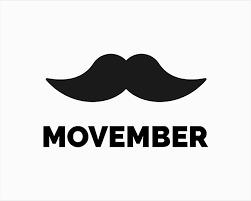
Well‑intentioned public‑health campaigns sometimes repurpose these same templates to attract attention. #Movember’s moustache selfies, for example, successfully mobilise peer‑to‑peer diffusion but also risk reinforcing narrow ideals of male appearance. Perloff (2014) cautions that without critical media literacy, campaigns can unintentionally normalise unhealthy standards even as they promote wellness, reproducing the very anxieties they aim to solve.
Algorithms, Prosumption & Feedback Loop
Platform algorithms amplify high‑engagement visuals, meaning polished bodies receive more exposure and, in turn, set new norms for what “performs” well online. Users respond by investing even more labour into conforming templates to gain visibility,a classic prosumption feedback loop (Ritzer & Jurgenson 2010). Left unchecked, this loop externalises psychological costs onto users while internalising ad revenue for platforms.
Healthier Digital Cultures

Resistance is possible. Evidence suggests that exposure to body‑positive or diverse‑sized content can buffer negative effects, improving mood and satisfaction (Brown & Tiggemann 2020). Researchers therefore advocate a multi‑level strategy: (1) integrating critical digital‑literacy modules into school curricula; (2) incentivising influencers to disclose edits and endorse diverse bodies; and (3) pushing regulators to demand algorithmic transparency. For practitioners, embedding alternative visuals, (e.g., unfiltered “Instagram vs Reality” sliders or TikTok #BodyPositivity compilations) , can re‑balance feeds and model more attainable standards.
Conclusion
Aesthetic templates operate at the intersection of culture, commerce and code. They frame bodies as projects, circulate through micro‑celebrity labour, and can undermine mental health,yet they are not immutable. By combining evidence‑based literacy, platform accountability and grassroots creativity, educators and users alike can reclaim the feed for healthier, more inclusive representations.
References
Brown, Z & Tiggemann, M 2020, ‘Attractive celebrity and peer images on Instagram: Effect on women’s mood and body dissatisfaction’, Body Image, vol. 33, pp. 138–143.
Carrotte, ER, Prichard, I & Lim, MSC 2017, ‘‘Fitspiration’ on social media: A content analysis of gendered images’, Journal of Medical Internet Research, vol. 19, no. 3, e95.
Drenten, J & Gurrieri, L 2019, ‘Sexualized labour in digital culture: Instagram influencers, porn chic and the monetization of attention’, Gender, Work & Organization, vol. 26, no. 1, pp. 12–30.
Fardouly, J, Diedrichs, PC, Vartanian, LR & Halliwell, E 2015, ‘Social comparisons on social media: The impact of Facebook on young women’s body image concerns and mood’, Body Image, vol. 13, pp. 38–45.
Khodabakhsh, S & Chan, SL 2020, ‘Relationship between social media usage and body image evaluation in Malaysian youth’, Malaysian Journal of Medical Research, vol. 4, no. 3, pp. 13–21.
Marwick, AE 2015, ‘Instafame: Luxury selfies in the attention economy’, Public Culture, vol. 27, no. 1, pp. 137–160.
Perloff, RM 2014, ‘Social media effects on young women’s body image concerns: Theoretical perspectives and an agenda for research’, Sex Roles, vol. 71, pp. 363–377.
Ritzer, G & Jurgenson, N 2010, ‘Production, consumption, prosumption: The nature of capitalism in the age of the digital “prosumer”’, Journal of Consumer Culture, vol. 10, no. 1, pp. 13–36.
#mda20009#Movember's moustache#body modification#gender representation#media literacy#youth mental health#social media culture#body positivity
0 notes
Text
Week 7: Digital Citizenship Case Study: Social Media Influencers and the Slow Fashion Movement

Introduction
In an era when fast fashion rules international marketplaces and fuels unethical labor practices and environmental degradation, digital citizenship provides a potent platform for change advocacy. Customers, influencers, and activists now have the chance to oppose exploitative fashion systems, encourage ethical purchase, and reinterpret civic duty thanks to the convergence of digital media and slow fashion.
Slow Fashion Trend & Influencer

The ability to use digital tools in a way that is morally, responsibly, and successfully within society is known as digital citizenship (Office of the eSafety Commissioner, 2023). It entails actively engaging in digital environments to influence conversation and promote social change, going beyond simply having internet access. This idea is best illustrated by the slow fashion trend. Influencers like Venetia La Manna and Kristen Leo use social media sites like YouTube and Instagram to promote sustainable alternatives while highlighting the negative effects of rapid fashion on the environment and people.(Harrisis, J.M & Roachis, B., 2021).
Foundation of Slow Fashion
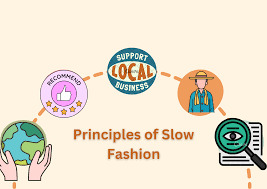
The principles of quality, durability, and ethical production are the foundation of slow fashion. By promoting thoughtful buying, second-hand shopping, and support for regional artists, it challenges the quick consumption model (Saricam, C. & Okur, N., 2018). Choosing to support ethical products or interact with slow fashion content online as a digital citizen is a political act—a vote for a more sustainable and just world.
Social internet has changed how people interact with fashion. According to Vromen (2017), digital platforms have reshaped civic norms and made it possible for people to build identities based on principles like justice and sustainability. Advocates for slow fashion disseminate information and inspire group action using hashtags, TikTok challenges, and Instagram campaigns. Big Sister Swap and other initiatives show how internet networks may promote ethical behavior throughout supply chains, challenge throwaway culture, and create circular economies.
Conclusion
Digital citizenship in this setting, however, also necessitates critical thought. Reposting stylish secondhand items or "sustainable" fashion finds without challenging privilege or greenwashing is insufficient. Transparency, intersectional knowledge, and sustained dedication are necessary for real transformation. It is not merely an academic exercise for us to examine slow fashion through the prism of digital citizenship; it is also a practice of moral engagement and a step toward a just digital future.
References
Harrisis, J.M. and Roachis, B., 2021. Environmental and natural resource economics.
Office of the eSafety Commissioner, 2023. Digital Citizenship. [online] NSW Department of Education. Available at: https://www.digitalcitizenship.nsw.edu.au [Accessed 13 June 2025].
Saricam, C. and Okur, N., 2018. Analysing the consumer behavior regarding sustainable fashion using theory of planned behavior. In Consumer behaviour and sustainable fashion consumption (pp. 1-37). Singapore: Springer Singapore.
Statista, 2022. Global Apparel Market – Statistics & Facts. [online] Available at: https://www.statista.com [Accessed 13 June 2025].
Vromen, A., 2017. Digital Citizenship and Political Engagement. In: Negotiating Digital Citizenship: Control, Contest and Culture. Littlefield.
0 notes
Text
Week 6: What is Digital Citizenship?
Hashtag Publics, Political Engagement and Activism
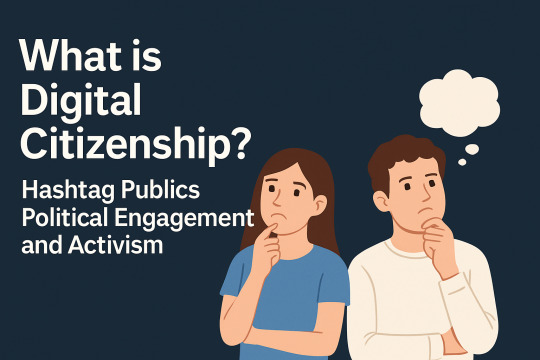
Who are the digital citizen?
In today’s interconnected digital landscape, the concept of digital citizenship has grown far beyond notions of online safety and responsible media use. It now encapsulates the active engagement of individuals in digital spaces as both consumers and producers of information, ideas, and political discourse. Digital citizens are not only internet users, they are participants in shaping the norms, debates, and values of online communities and broader society.
Digital citizenship can be understood as the ability and willingness to use digital tools thoughtfully and ethically to engage with others, access and share information, and contribute to civic and cultural life (Choi & Cristol, 2021). It involves technical competence, critical thinking, and an awareness of one's rights and responsibilities online. Importantly, it includes engaging with social and political issues, often in personalized and expressive ways that go beyond traditional political participation.
Principles of Digital Citizenship
The three fundamental core of digital citizenship are protection, education, and respect. (Mossberger et al. 2007). The online communities might probably fall into disorder and hatred without these main core in the digital citizenship ecosystems.
Key Mechanism

One of the key mechanisms of contemporary digital engagement is the use of hashtags, which serve as linguistic and technical tools to organize, filter, and amplify conversations across social media platforms. Referred to as “hashtag publics,” these ad hoc communities gather around specific causes, events, or topics—such as #MeToo or #Blacklivesmatter collective expression, solidarity, and mobilization (Bruns & Burgess, 2015). These publics are often ephemeral, yet powerful in shaping discourse and visibility.
Digital activism has become a central aspect of how citizens, especially younger generations, engage with social and political issues. Hashtag publics facilitate micro-level actions like sharing a petition or expressing support through posts and comments, which can scale into macro-level movements. This form of expressive participation aligns with what Choi and Cristol (2021) describe as the move toward participatory democracy—where daily digital actions contribute to shaping public discourse and social norms.
A prominent example of this is the digital engagement surrounding the #BlackLivesMatter movement. While BLM is often discussed in relation to racial justice in the United States, it also exemplifies how digital citizenship intersects with activism. In 2020, the NBA adopted BLM messaging in its branding, social media presence, and even physical court designs, making it a visible supporter of the cause. This action highlights how institutions and individuals alike use digital platforms not only to express solidarity but to perform civic identities (Choi & Cristol, 2021).

#blacklivesmatter movement has been promoted by the NBA association during the covid-19 pandemic
Challenges
Digital citizenship is not without its challenges, though. Digital environments are frequently controlled by opaque algorithms and commercial interests due to the process known as "platformization," which refers to the growing influence of private tech businesses on public debate (Poell et al.,2019). Platforms decide whose opinions are heard and whose are ignored, despite their claims to be neutral forums for free speech.
In this context, understanding digital citizenship also requires media literacy, ethical reflection, and an intersectional lens. As Choi and Cristol (2021) argue, marginalized groups experience digital engagement differently, and equitable participation online depends on addressing digital divides in access, representation, and voice.
Conclusion
In conclusion, digital citizenship is a multifaceted and evolving concept. It encompasses not only the ability to navigate digital tools responsibly but also the capacity to engage critically and empathetically with social and political issues. Through hashtag publics, participatory platforms, and expressive digital actions, citizens are redefining how activism and civic life take shape in the 21st century.
References
Bruns, A. & Burgess, J., 2015. The use of Twitter hashtags in the formation of ad hoc publics. In: Rambukkana, N. ed. Hashtag Publics: The Power and Politics of Discursive Networks. New York: Peter Lang, pp. 13–28.
Choi, M. & Cristol, D., 2021. Digital citizenship with an intersectionality lens: How digital citizenship education can support marginalized learners. In: Choi, M. ed. Digital Citizenship in the 21st Century. Springer, pp. 59–76.
Mossberger, K., Tolbert, C.J. and McNeal, R.S., 2007. Digital citizenship: The Internet, society, and participation. MIt Press.
Poell, T., Nieborg, D. & van Dijck, J., 2019. Platformisation. Internet Policy Review, 8(4), pp.1–13.
0 notes
Text
Week 11: Digital Citizenship and Conflict: Social Media Governance

Digital citizenship is more than using technology responsibly. It includes active, informed participation in digital society and the negotiation of power and identity online. While it’s often portrayed as empowering and inclusive, it can also reflect existing inequalities and exclusions (Mossberger et al., 2008).
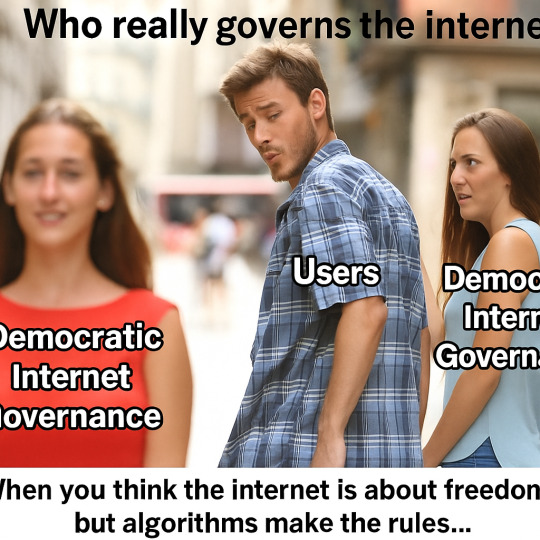
Governance in the Digital Age
Social media governance operates on multiple levels. At the macro level, national laws (like Australia's Online Safety Act 2021) and international regulations shape digital environments. At the micro level, moderators of Facebook Groups or subreddits set rules for their communities. These governance structures are often fragmented, with competing interests from governments, corporations, and users (Crowther & Rayman-Bacchus, 2016).
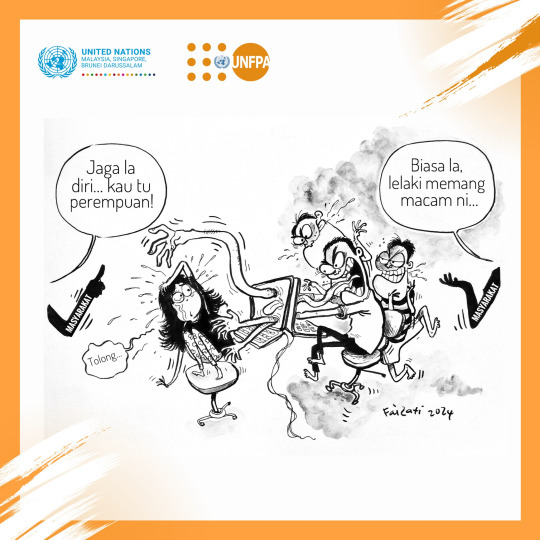
This UNFPA Malaysia cartoon illustrates online gender-based harassment, showing a woman attacked by monstrous male figures emerging from a computer screen. It critiques societal victim-blaming and the normalization of abusive male behavior online. “Jaga la diri… kau tu perempuan!” (“Take care of yourself… you’re a woman!”), while another says, “Biasa la, lelaki memang macam ni…” (“It’s normal, men are just like that…”).
Online Harassment: Forms and Impact
Online harassment includes name-calling, threats, doxing, and image-based abuse. It is often coordinated and systemic, especially against women, LGBTQ+ individuals, and people of colour (Marwick & Caplan, 2018). Research shows that more than half of girls worldwide have faced abuse online , and that cyberhate mirrors offline prejudices (Gardiner et al., 2016).

The Power Dynamics Behind Conflict
Digital conflict isn't just about individual bad actors, it reflects broader struggles over speech, identity, and control. Campaigns like Gamergate exemplify how online abuse is weaponized for political and ideological purposes, reinforcing the need to address power structures within digital platforms (Marwick & Caplan, 2018).
Responses to Online Harassment
Legal: The Online Safety Act 2021 mandates takedowns of harmful content within 24 hours.
Social & Cultural: Humour and satire, such as the work of Hannah Gadsby, can resist abuse.
Advocacy: Organisations like the eSafety Commissioner offer reporting tools and guidance.
Corporate Pressure: Public criticism has pushed platforms to improve moderation. A 2021 Pew study found that 79% of users felt social media companies were failing to address harassment.

Corporate Social Responsibility and Influencer Support
Brands are increasingly expected to protect influencers and users from abuse. CSR in the digital age means standing up for creators, offering support, and promoting positive community standards (Littleton, 2021). Companies must recognize their role in enabling or mitigating digital harm.
Conclusion
Digital citizenship today must include a deep understanding of online conflict, governance, and identity. It's about ensuring that participation in digital spaces is safe, inclusive, and equitable—not just accessible. Legal tools, community action, and corporate responsibility must work together to realise this vision.
References
Crowther, D. & Rayman-Bacchus, L., 2016. Corporate Social Responsibility. 3rd ed. London: Routledge.
Gardiner, B. et al., 2016. The dark side of Guardian comments. The Guardian. Available at: https://www.theguardian.com/technology/2016/apr/12/the-dark-side-of-guardian-comments [Accessed 17 May 2025].
Haslop, C., O’Rourke, S. & Southern, R., 2021. Online harassment and gender. Media, Culture & Society, 43(2), pp. 313–328.
Marwick, A. & Caplan, R., 2018. Drinking male tears: Language, the manosphere, and networked harassment. Feminist Media Studies, 18(4), pp.543–559.
Mossberger, K., Tolbert, C.J. & McNeal, R.S., 2008. Digital Citizenship: The Internet, Society, and Participation. Cambridge, MA: MIT Press.
Plan International, 2020. Free to be online? Girls and young women’s experiences of online harassment. Available at: https://plan-international.org/publications/freetobeonline [Accessed 17 May 2025].
#mda20009#self governance#cyberbullying#harrasment#digital communities#digital citizenship#governance
0 notes
Text

“Portions of this site and the works within it are being produced with the intention of critique and/or educational use under Australia's 'fair dealing' exceptions to copyright (Section 40 & 41). However, if you feel your IP is being infringed, please contact my service provider (Tumblr) with the appropriate DMCA requests, as I, the single author take full responsibility for the content of this site.”
Copyright @ Lu Kai Zhe
0 notes
Text
Week 5: Digital Community and Fandom
In this digital age, the diversity of the community has brought a great impact to the fandoms and reality TV shows. The rise of digital community space has dramatically change the way we interact and engage with one another online and offline.
User-generated content on platforms like YouTube, Facebook, and Instagram is rapidly growing, allowing ordinary users to take on roles traditionally held by journalists. This rise of active audiences contributes to the de-professionalization of new media, which remains the most creative and least industrialized part of the media landscape. (Vartanova, 2014.)
A strong example of this is fan communities, known as fandoms,. Fandoms are groups of devoted followers that produce, share, and discuss content relating to a certain interest, such as a game, TV show, or celebrity (Jenkins, 1992). The distinction between producers and consumers is blurred in these participatory cultures, which turn passive audiences into active participants (Baym, 2018).
Digital networks let fans connect, talk, and share their interests in ways that weren’t possible before. (Jenkins, 2006)

Nowadays, Fans often open fanpage on social media for their idol and have discussion in it.

One significant impact of digital fandom is the redefinition of celebrity-fan relationships. Social media platforms like Twitter and Instagram have enabled parasocial interactions, where fans feel an intimate connection with celebrities despite the lack of mutual awareness (Click et al., 2017). This has empowered fans to both support and challenge public figures, as seen in movements like #ReleaseTheSnyderCut, where a digital community mobilized to influence industry decision-making (Greene, 2024).
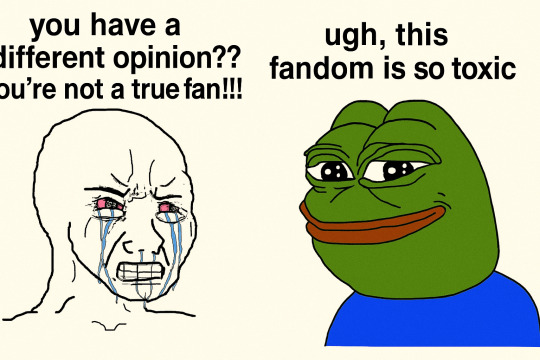
Moreover, digital fandoms are not without conflict. They often engage in "fan wars" or exhibit "toxic positivity" where dissenting voices are policed within the community. Stan culture, a term popularized through the Eminem song “Stan” and now synonymous with hyper-devoted fandoms, can perpetuate exclusionary behavior, raising questions about inclusivity and ethics in digital participation (Bermudez et al, 2020.).
Conclusion
In conclusion, digital communities and fandoms have reshaped the cultural landscape by offering fans new tools for expression, identity-building, and collective action. However, these transformations also bring challenges around governance, inclusivity, and commercialization, making it a fertile ground for ongoing media scholarship.
References
Baym, N.K. 2018, Playing to the crowd: Musicians, audiences, and the intimate work of connection, NYU Press, New York.
Bermudez, R., Cham, K., Galido, L., Tagacay, K. and Clamor, W.L., 2020. The Filipino “Stan” Phenomenon and Henry Jenkins‟ Participatory Culture: The Case of Generations X and Z. Asia Pacific Journal of Education, Arts and Sciences, 7(3), pp.1-7.
Click, M.A., Lee, H. and Holladay, H.W., 2017. Making monsters: Lady Gaga, fan identification, and social media. In Fan Identities and Practices in Context (pp. 82-101). Routledge.
Greene, R., 2024. DC Unmade: Failure, Fandom and the Justice League Films That Could Have Been (Doctoral dissertation, Colorado State University).
Jenkins, H. 1992, Textual poachers: Television fans and participatory culture, Routledge, New York.
Jenkins, H. (2006). Convergence Culture: Where Old and New Media Collide. New York: New York University Press. 336 pp. $29.95 (hardbound). Social Science Computer Review, [online] 26(2), pp.252–254. doi:https://doi.org/10.1177/0894439307306088.
Lopez, L.K., 2012. Fan activists and the politics of race in The Last Airbender. International Journal of Cultural Studies, 15(5), pp.431-445.
Vartanova, E., 2014. Media in digital society: Challenges of active audience. Global Media Journal, 2(2), pp.16-28.
1 note
·
View note